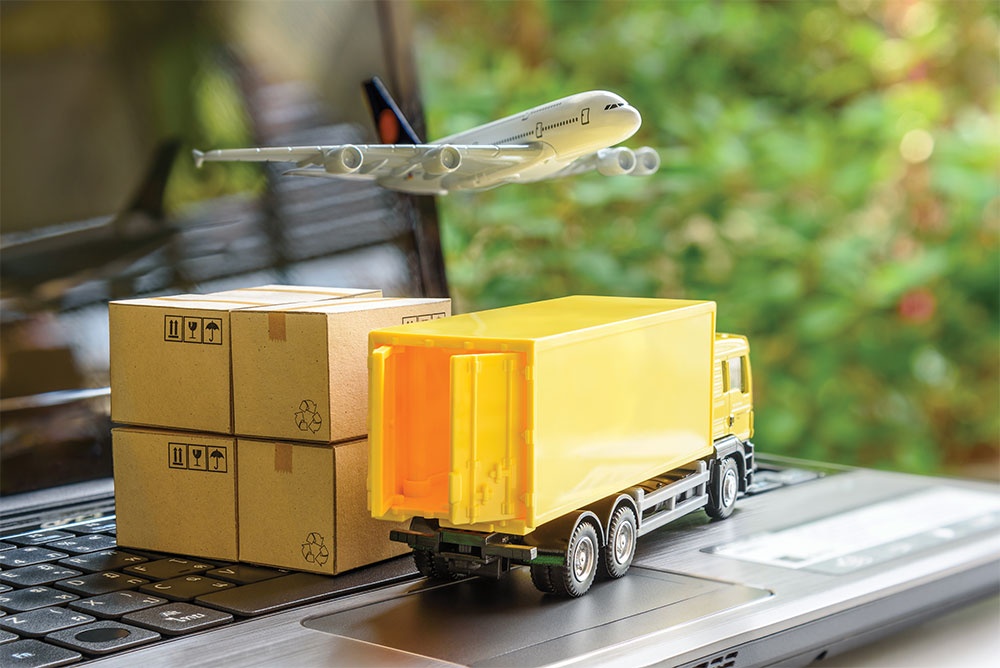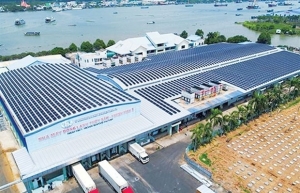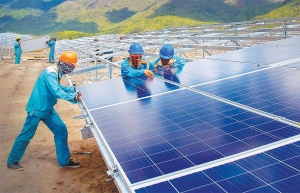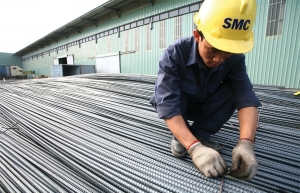Exporters anxious over EU carbon tax implementation
The carbon tax (CBAM), to be introduced on October 1, not only impacts the complete supply chain of the steel, cement, aluminium, and fertiliser industries, but also the export value of Vietnamese products to the EU market.
 |
| There is a worry that some firms will not be able to meet the CBAM’s emissions standards, Photo: Shutterstock |
In terms of the economy as a whole, the impact of the CBAM is not deemed significant. However, the decrease in export value for each industry and business is not insignificant, increasing the burden on businesses. That is according to survey results published by the Southeast Asian Energy Transition Partnership Programme on April 14.
The survey indicates that the steel industry is likely to lose roughly 4 per cent of its export value. The decrease in demand has resulted in a 0.8 per cent decline in output as well as a decline in market competitiveness. Additionally, the aluminium industry’s export value has decreased by more than 4 per cent, while output decreased by roughly 0.4 per cent.
The degree of impact on the cement and fertiliser industries may be slight, because the CBAM will provide affected producers with a direct incentive to reduce emissions.
As yet, no data has been compiled on the pressures on major exporters in terms of the absolute value of exported cement and fertiliser; and Vietnamese groups such as the associations of fertilisers and cement do not have data on the possible effects of the CBAM.
Vietnam’s aluminium industry will not be immune to the effects of the CBAM, as the EU is one of its most important markets. In 2022, exports of aluminium products topped $2.12 billion, with almost 15 per cent going to the EU.
The Vietnam Aluminium Association’s chief of staff, Ly Thi Ngan, expressed concern that firms “cannot meet” the CBAM emission standards. There are currently 26 aluminium companies on the list of manufacturers who conduct greenhouse gas (GHG) inventories and mandatory emission reductions.
“Aluminium electrolysis generates the most GHG emissions, while aluminium smelting is the weakest in terms of emissions,” Ngan said. “Alumina smelting also uses a great deal of energy and produces emissions due to limited technological, financial, and human resources.”
Meanwhile, Luong Duc Long, general secretary of the Vietnam Cement Association, is worried that clinker and cement will “bear a huge carbon tax” when the EU implements the CBAM due to their high emissions. While the cost of energy production continues to rise and renewable energy usage remains low, the cost of energy production also continues to rise.
Long determined that it was challenging to reduce the clinker content because no consumer desired to purchase less clinker cement. In addition, the clinker content of Vietnam’s cement has attained a low global average of 70–75 per cent, making further reductions problematic.
“Enterprises need an incentive mechanism, financial support, and technology conversion as leverage,” said Long. Vietnam has almost 60 cement facilities, but accounts for 57 per cent of CO2 emissions in the manufacturing process, a higher emission rate than 36 per cent of coal-fired and 6 per cent of electric power.
Expert Nguyen Hong Loan stated that emissions are calculated for goods that are not only produced in the production process, but also from input materials and imported materials. “Currently, Vietnamese businesses are only able to provide emission data for the production and processing of products, whereas the CBAM requires emission data for both production inputs,” Loan said.
The CBAM’s specific regulations are still being finalised, but they are likely to be extended to other Vietnamese exports, such as ceramics, cellulose, and paper. The non-economic effects of administrative duties could be reported as being more substantial, Loan added.
| Beginning on October 1, 27 EU member states will pilot the CBAM. Based on the carbon footprint of the manufacturing process, importers will be required to purchase emission permits from the EU’s Emission Trading System. The CBAM has a three-year transition period to January 2026. The government of Vietnam issued Decree No.06/2022/ND-CP on mitigating GHG emissions and protecting the ozone layer in January 2022, to reduce approximately 564 million MT of CO2 by 2030. This decree mandates that exporting businesses convert their production processes to reduce carbon emissions. From that point on, commodities exported from Vietnam to the EU will be subject to a lower carbon border tax, or none at all, if the standards for carbon emissions in the production process comply with EU standards. |
 | Vietnam must step up carbon reduction to enter EU markets Vietnam must start monitoring and issuing carbon certificates to exporters and retailers in response to the EU's recently passed carbon levy, said industry insiders and policymakers. |
 | Deals to push forward carbon commitments While joining Japan’s fresh carbon neutrality initiative, Vietnam has continued enjoying international assistance in its drive to achieve its net-zero emission dream by mid-century. |
 | Steel groups take on EU’s carbon rules Steel manufacturers in Vietnam are anxious about the procedures for receiving and reporting data related to carbon emissions for the upcoming application of the EU’s Carbon Border Adjustment Mechanism. |
What the stars mean:
★ Poor ★ ★ Promising ★★★ Good ★★★★ Very good ★★★★★ Exceptional
Related Contents
Latest News
More News
- First members of Danang International Finance Centre revealed (December 22, 2025 | 17:39)
- Human-centred governance seen as key to AI development (December 19, 2025 | 18:19)
- Top 10 notable events of Vietnam’s industry and trade sector in 2025 (December 19, 2025 | 14:00)
- Tungsten surges to 12-year high as world enters a new 'black gold' race (December 18, 2025 | 17:27)
- Vietnam’s coffee exports set new record despite price pressures (December 18, 2025 | 17:13)
- Garment and textile sector seeks new growth after volatile year (December 18, 2025 | 17:01)
- VinSpeed and Siemens strengthen cooperation for high-speed rail development (December 18, 2025 | 16:53)
- High-tech adoption for TH true MILK (December 18, 2025 | 13:39)
- Takeda supports health resilience amid climate change challenges (December 18, 2025 | 12:39)
- Mondelez Kinh Do - a chapter of purpose-led leadership in Vietnam (December 18, 2025 | 09:44)

 Tag:
Tag:






















 Mobile Version
Mobile Version